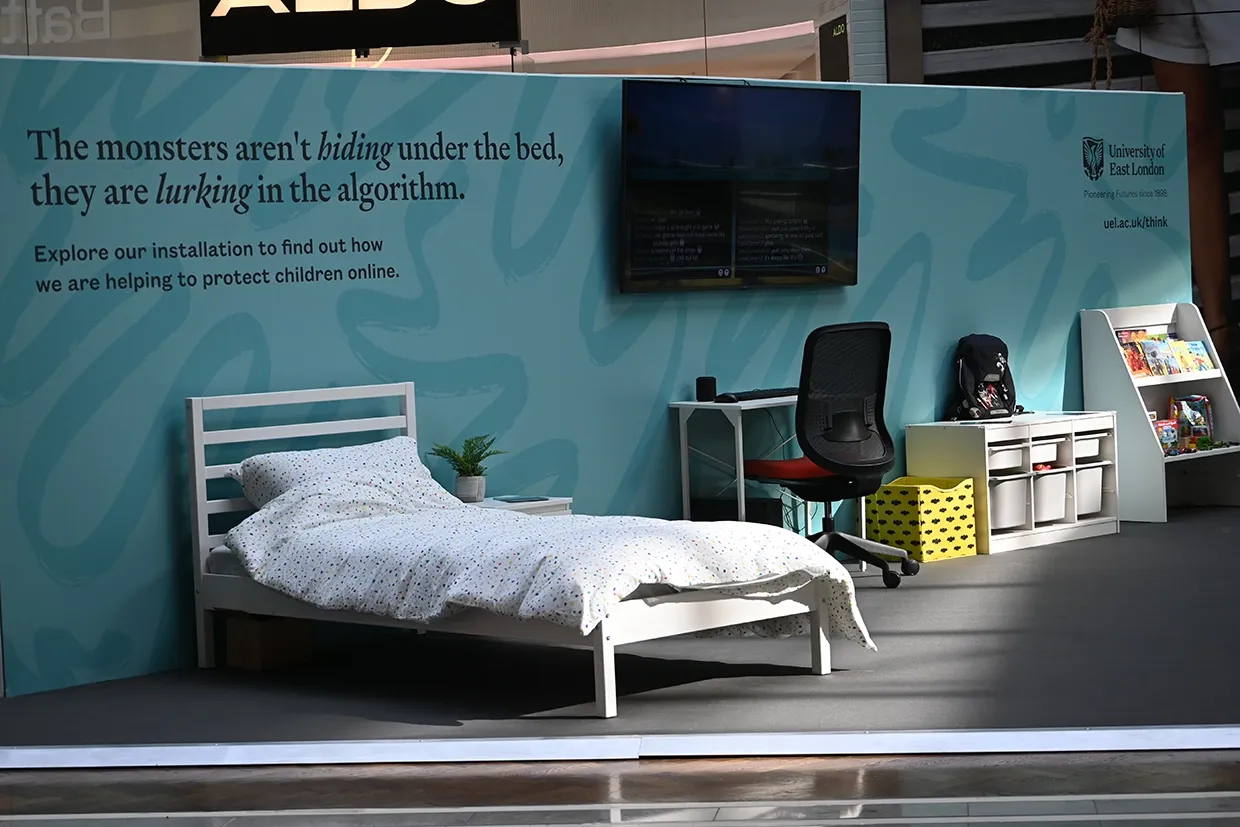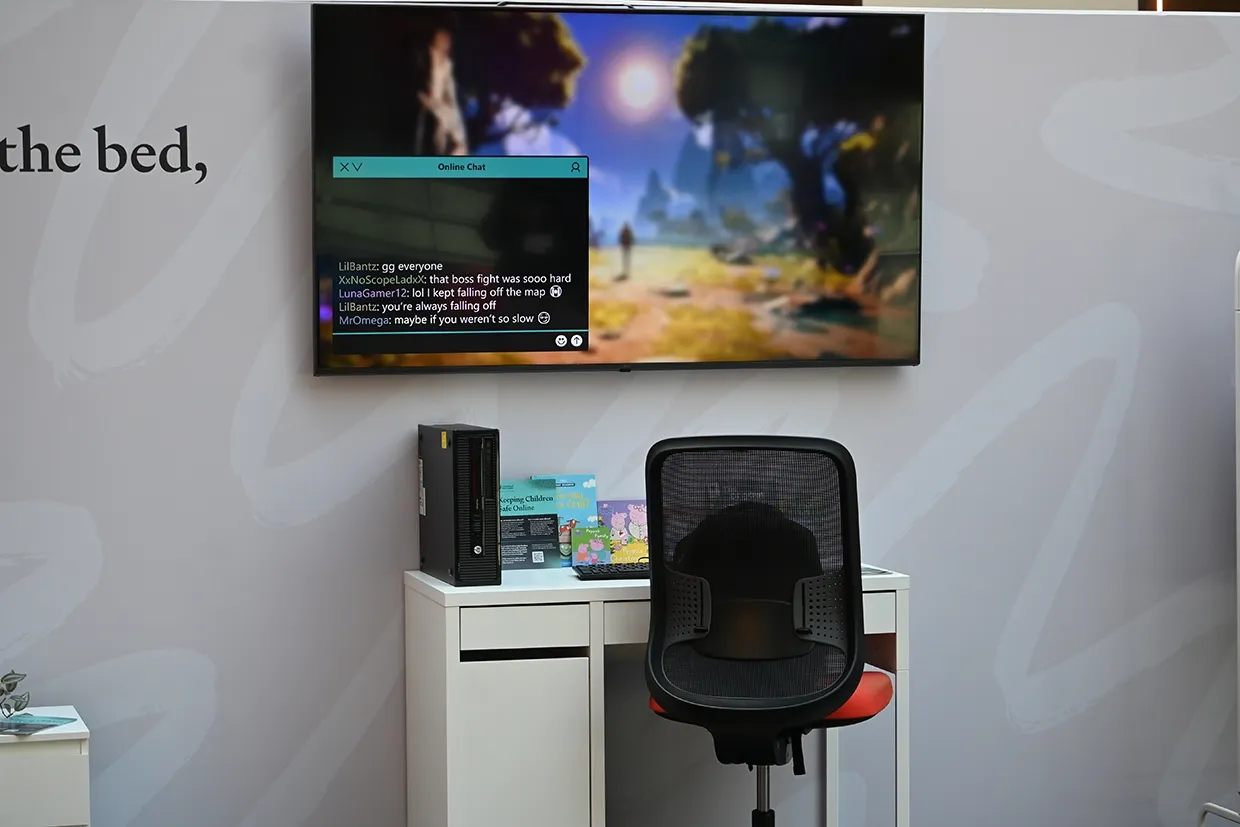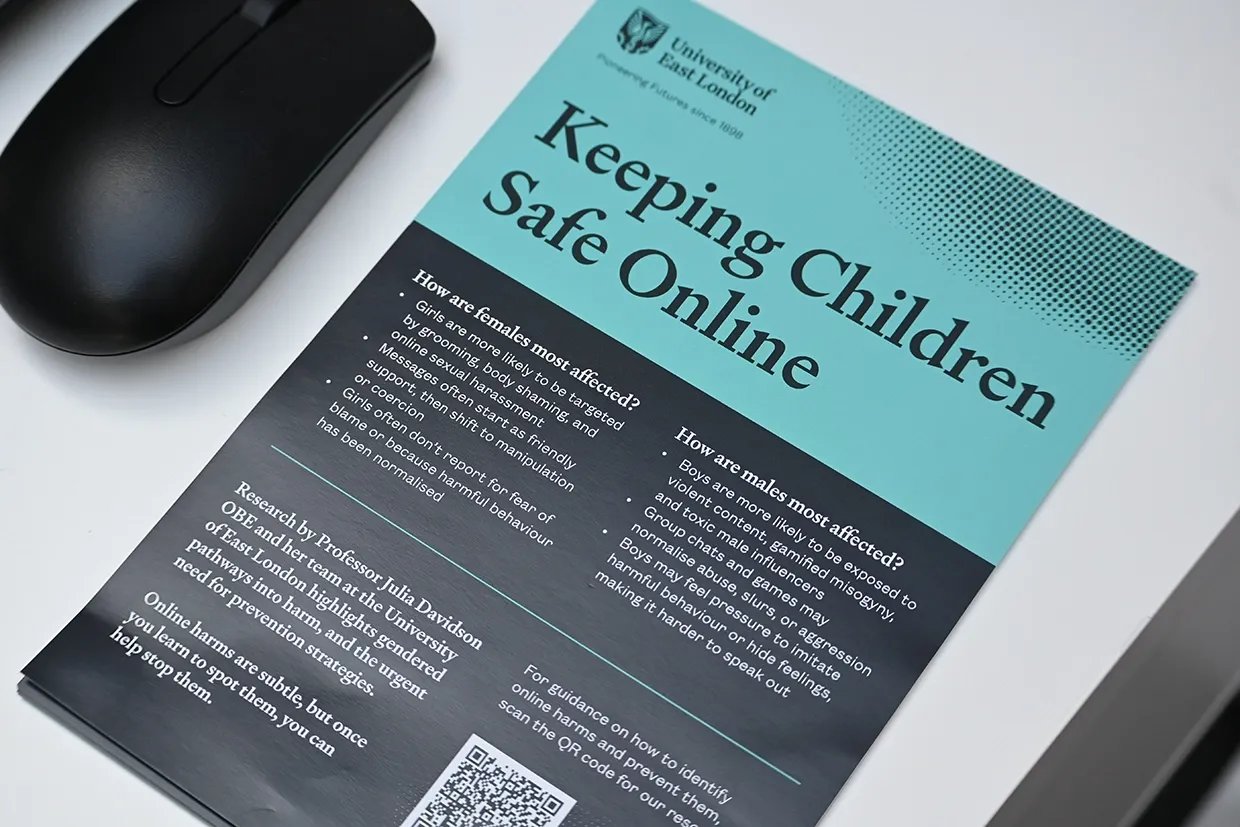Parents, carers, and shoppers were confronted with the hidden dangers of today’s digital world at an unexpected location yesterday.
A new immersive installation created by experts at the University of East London (UEL) was set up in Westfield Stratford City shopping centre, aiming to educate passers-by on the everyday technologies exposing children to harm online.
Alexandra Deac, Research Assistant at UEL, told the Citizen: “Stratford is one of London’s most diverse, youthful, and dynamic communities. The shopping centre is where families, young people and parents naturally gather.

“By placing the exhibit here, we bring awareness into everyday spaces, reaching people directly rather than in academic or policy settings.”
Throughout the day, young people and parents were eager to find out more about the project which had piqued their interest whilst out shopping.
Featuring two full-sized pre-teen bedrooms, the installation encourages viewers to identify hidden apps, private chats, and toxic influencers across smart tech, gaming consoles, and computers.

Grooming, cyberbullying, and manipulative algorithms, which were identified as key dangers in UEL’s research, are alluded to throughout the installation.
Female and male pathways into harm are also represented by the two rooms, with boys more often affected by gamified misogyny, violent content, bullying behaviours, and exposure to toxic online cultures, while girls are disproportionately targeted with image-based abuse, sexual harassment, and body shaming.
A subtle interplay between the two settings represents these interconnected risks to show the complex and overlapping reality of online harms.
Ms Deac said: “Online harms blur into every aspect of life, friendship, learning, play and identity. We’re seeing risks like grooming, sexual extortion, exposure to harmful content and pathways into risky behaviour like cybercrime.
“For some young people, this leads to anxiety, isolation, and long-term consequences. For parents, it creates real fear about how to keep children safe in environments that are increasingly private and hard to monitor.”
Serious online harms can also include exposure to terrorism, body stigma content, self-harm, suicide, and hate content, having long lasting effects on children and young people.
Despite robust measures in place, harmful online content remains easily accessible.
UEL’s research surveyed more than 8,000 young people across nine countries to look into the impact of online risks including AI, virtual reality and metaverse simulations.
Ms Deac said: “Carrying out this research was both sobering and motivating. Sobering because of the scale of the harm, which is deeply concerning. But truly motivating because we are not powerless.
“Bringing research, community voices, and policy together gives me hope that we can design safer online spaces and support children and young people to thrive.”

Having partnered with the National Crime Agency, the NSPCC, Ofcom, the Home Office, and the Department for Culture, Media & Sport (DCMS), the installation is part of UEL’s call for national and international policy reform on prevention strategies.
Professor Julia Davidson OBE, one of the UK’s leading experts on child online safety and director of UEL’s Institute for Connected Communities said: “Online harms are often subtle, it’s important to work with children and young people to help them recognise the signs and respond appropriately.
“The University of East London’s installation aims to help people identify the warning signs of online harm and encourages having difficult but vital conversations at home with children and young people on online safety to help protect them.
“We’re not just talking about online safety, we’re changing how it’s understood, taught, and protected in legislation.”
Ms Davidson is Professor of Criminology at UEL and executive director of research at the Institute for Connected Communities, where she also leads the Child Online Harms Policy Think Tank.
Launched at the House of Lords in 2025, the think tank brings together academics, policymakers, law enforcement, and industry leaders to turn evidence into action, ensuring children’s rights and safety are prioritised in the digital age.





